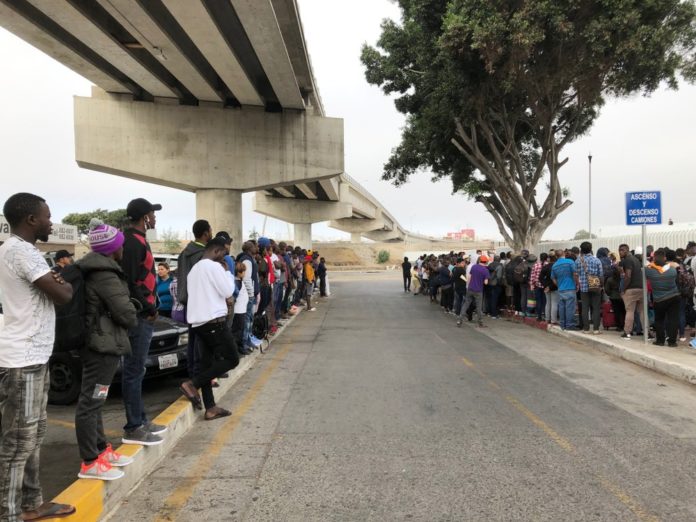Ambazonians fleeing Francophone army atrocities helped push Mexican asylum wait list to 10,000
Beltran Ngi, 33, goes to the Tijuana border crossing to hear someone tick names off the waiting list on a bullhorn around 8 a.m., even though there are more than 8,000 names ahead of him. He is suspicious of asylum seekers who are escorted separately to a waiting Mexican immigration van without having their names called. On a recent Friday, about half of 40 spots were for people whose names weren’t called.
Ngi, who hopes to use his English to work at a Tijuana call center even though his 20-day transit permit through Mexico expired, shared a two-bedroom apartment with seven others but couldn’t afford his roughly $50 share of monthly rent. He moved to a migrant shelter to sleep and eat for free. He said he fled Cameroon after five days imprisoned in a cell with 40 people who shared one pail as a toilet.
Before he was imprisoned, he was visiting an uncle in a neighboring village when soldiers beat his father and set his house on fire. Ngi, who hopes to join family in North Dakota, followed a route favored by Cameroonians: flying to Ecuador due to loose restrictions on accepting visitors from the African nation and traveling through eight countries. He was famished on his 11-day walk through Panama but reminded himself it was better than Cameroon. “It’s better to die in the jungle than to die of bullets,” he told himself.
He is among the Cameroonian men who share 10 mattresses on the floor of a third-floor apartment above a barber shop walk every morning to the busiest U.S. border crossing with Mexico, hoping against all odds that it will be their lucky day to claim asylum in the United States. Their unlikely bet is that a sympathetic Mexican official will somehow find a spot for them.
English-speaking Cameroonians fleeing atrocities of their French-speaking government helped push Tijuana’s asylum wait list to 10,000 on Sunday, up from 4,800 just three months earlier. At the same time, the U.S. is returning more Central Americans to Mexico to wait for dates in U.S. immigration court, putting asylum seekers in an unexpected, prolonged period of uncertainty.
Based on Mexican government figures and reporting by The Associated Press, at least 40,000 migrants who have reached the U.S. border with Mexico are on a waiting list for an initial attempt to seek asylum or waiting for a court hearing in the U.S. after being sent back.
The figure represents a dramatic increase from earlier in the year. It is unknown how many have entered the U.S. illegally, decided to settle in Mexico or gone back to Central America. The long waits are testing the patience of some asylum seekers and residents in border cities.
More than 100 Cameroonians blocked the path of the government immigration vans last month, demanding more transparency about who gets accepted from the wait list to request asylum. It came after several days on which the U.S. accepted no claims. People getting called now have been in Tijuana about 3½ months, but the wait is expected to lengthen.
Turning Mexico into a waiting room for U.S. asylum seekers may be the Trump administration’s most forceful response yet to a surge of migrants seeking humanitarian protection, many of them Central American families. The effort is part of a broader crackdown on immigration, subject of a polarizing debate that became even more pitched after the discovery of an anti-immigrant screed tied to a man charged with killing 22 people in El Paso, Texas, Saturday.
Source: The Yeshiva World





